Reaktor-Temperaturregelung
Kontaktieren Sie uns noch heute für die perfekte Lösung zur Temperaturkontrolle
The reactor is the main reaction equipment in the chemical synthesis API industry. The volume of the reactor is generally 0.5m³ ~ 8m³, and its production mode is mostly intermittent production. A variety of organic reactions are involved in the drug synthesis process. These reactions can be divided into endothermic reactions and exothermic reactions. The exothermic reactions can be divided into instant exothermic reactions, fast exothermic reactions and slow exothermic reactions. Maintain the reaction. Stable process temperature is an important prerequisite for ensuring reaction safety, product quality, and high yield.
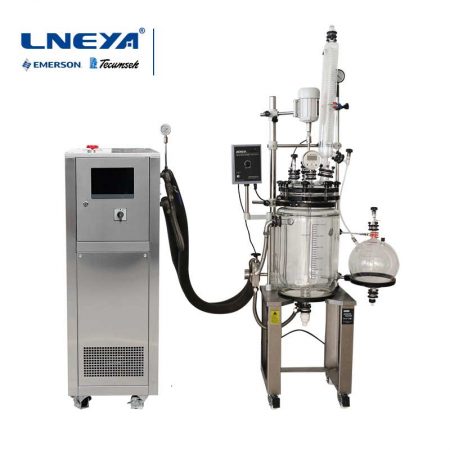
The temperature control process of the batch reactor is mainly divided into the following stages:
1. Early stage of reaction: raise or lower the temperature to the required reaction temperature.
2. Reaction process: Generally, it is a constant temperature reaction, which keeps the reaction temperature constant at a certain set value. For a multifunctional intermittent reactor, the reactions carried out are different each time, so the heat needs to be removed or supplied. Uncertainty. In order to meet the reaction needs, the temperature control requirements of this process need to be fully considered. If the temperature control is unstable, it will easily lead to a decrease in the yield and quality of the product. What’s more, it may lead to local over-temperature reactions and cause safety accidents. Therefore, whether the temperature control is stable at this stage is crucial to the safety of the reaction and the quality of the product.
3. End of reaction: Generally, it is also necessary to cool down or raise the temperature to a specified temperature. In the production process, there are strict time regulations for the intermittent reactor from the beginning of heating to the final cooling. It is generally required to conduct the reaction system according to a certain rising/lowering rate. Temperature raising/lowering operation has high requirements on the calculation of heat transfer in intermittent reactors and the selection of temperature control methods.
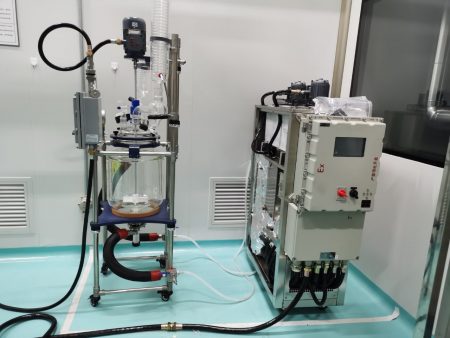
Future Prospects for Reactor Temperature Control Systems
1. Although a single TCU system has high temperature control accuracy for slow exothermic reactions, it is large in size and high in cost. Hybrid control systems have the characteristics of high flexibility, high temperature control accuracy, low cost, and good integration, and are gradually becoming mainstream.
2. Develop an intelligent temperature control system: The existing temperature control system only requires the operator to input the temperature control requirements and then the control system controls the temperature according to the input requirements. For some slow reactions, this mode can still cope with it, but for some Fast response cannot achieve good results. The reason is that the control process only controls it simply in the dimension of the control principle. At most, some complex control strategies such as cascade control, split-range control, etc. are added. There is no integration of control, process, and equipment. Come together organically.
3. Future intelligent temperature control systems should also include the following modules
① Equipment expert system: includes heat and mass transfer characteristics of different stirrings, heat transfer characteristics of reactor walls, reactor characteristics database, etc.;
② Process reaction exotherm expert system: includes exothermic curve databases for different reaction types, reaction exothermic curve databases for different products, heat transfer databases for different solvents, etc.;
③ Automatic control strategy selection expert system: includes selection guides for various control strategies for intermittent reactions, system identification systems, etc.
The above three systems + hardware together form an intelligent temperature control system. The operator only needs to select the reaction type, reaction medium, etc., and the system will select the appropriate control strategy based on the input reaction conditions and the current equipment conditions, and perform system identification in real time. Adjust the control strategy to achieve self-identification and self-adaptation of the temperature control system to achieve precise temperature control.
Wir bieten die Entwicklung und Herstellung kompletter Temperaturkontrollsysteme an. Von Standardmodellen bis zu kompletten kundenspezifischen Produkten bis hin zu 900 Tonnen. Wir haben uns auf den Kundenservice spezialisiert und sind bestrebt, jedem Kunden zu helfen, das optimale Temperaturkontrollsystem für seinen spezifischen Bedarf zu finden.
Wir bieten maßgeschneiderte Lösungen, die nicht dem Standard entsprechen. Es sind sowohl einzelne Kühlaggregate als auch kombinierte Kühl- und Heizaggregate erhältlich.
E-Mail: lilia@lneya.com WeChat ID: +8615251628237 WhatsApp: +86 17851209193


Kühl- und Heizsysteme (Serie SUNDI)
- Temperaturbereich: -120℃ ~ +350℃
- Hochpräzise, intelligente Temperaturregelung
- Kühlleistung: 0,5kW ~ 1200kW
- Vollständig geschlossenes System zur Verlängerung der Lebensdauer des Thermofluids
- Jedes Gerät wird mehr als 12 Stunden lang einem Belastungstest unterzogen.
| Temperaturbereich | Serie -10 ~ +150°C | Serie -25 ~ +200°C | Serie -25 ~ +300°C | Serie -45 ~ +250°C | Serie -45 ~ +300°C | Serie -60 ~ +250°C | Serie -60 ~ +300°C | Serie -70 ~ +250°C | Serie -80 ~ +250°C | Serie -90 ~ +250°C | Serie -100 ~ +100°C | ||
| Kühlleistung | 1,5 ~ 15kW | 1 ~ 200kW | 1 ~ 200kW | 0,45 ~ 200kW | 0,9 ~ 25kW | 0,25 ~ 60kW | 0,75 ~ 25kW | 0,4 ~ 15kW | 0,3 ~ 80kW | 0,2 ~ 80kW | 0,45 ~ 80kW | ||
| Hinweis: Jeder Temperaturbereich von -150℃ ~ +350℃ und jede Kühlleistung kann angepasst werden | |||||||||||||
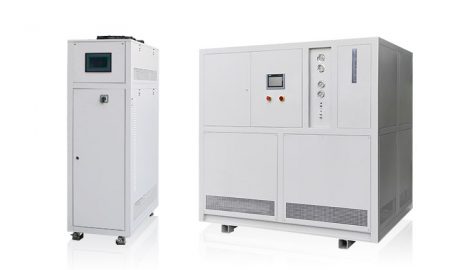
Kühl- und Heizsysteme (WTD-Serie)
- (Mikrokanal / Röhrenreaktoren spezialisiert)
- Temperaturbereich: -70℃ ~ +300℃
- Leistungsstarke Umwälzpumpe, stabilere Temperaturregelung
- Breiter Temperaturbereich zur Erfüllung der Anforderungen mehrerer Branchen
- Jedes Gerät wird mehr als 12 Stunden lang einem Belastungstest unterzogen.
| Temperaturbereich | -70°C ~ +300°C | -45°C ~ +250°C | -70°C ~ +200°C | ||||||
| Kühlleistung | 1.1 ~ 7.5kW | 1.5 ~ 5.5kW | 11 ~ 50kW | ||||||
| Hinweis: Jeder Temperaturbereich von -150℃ ~ +350℃ und jede Kühlleistung kann angepasst werden | |||||||||

Umwälzpumpen für Kühlung und Heizung
- Temperaturbereich: -45℃ ~ +250℃
- Emerson Copeland Kompressor, zuverlässige Qualität
- Selbstdiagnosefunktion, mehrere Sicherheitsschutzvorrichtungen
- Vollständig geschlossenes System zur Verlängerung der Lebensdauer des Thermofluids
- Jedes Gerät wird mehr als 12 Stunden lang einem Belastungstest unterzogen.
| Temperaturbereich | Serie -25°C ~ +200°C | Serie -45°C ~ +250°C | |||||||
| Kühlleistung | 1 ~ 15kW | 0,25 ~ 15kW | |||||||
| Hinweis: Jeder Temperaturbereich von -150℃ ~ +350℃ und jede Kühlleistung kann angepasst werden | |||||||||
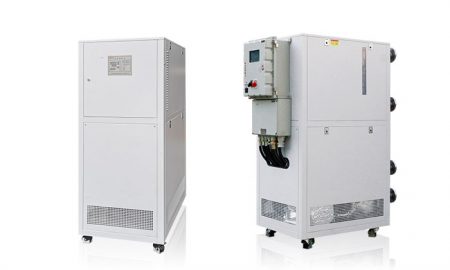
Heizungsumwälzpumpen
- Temperaturbereich: +50℃ ~ +300℃
- Große Wärmeaustauschfläche und schnelle Aufheizgeschwindigkeit
- Selbstdiagnosefunktion, mehrere Sicherheitsschutzvorrichtungen
- Geschlossenes Kreislaufsystem, kein Ölnebel bei hohen Temperaturen
- Jedes Gerät wird mehr als 12 Stunden lang einem Belastungstest unterzogen.
| Temperaturbereich | +50°C ~ +170°C (UC-Serie) | +50°C ~ +300°C (UC-Serie) | +50°C ~ +300°C (UST-Serie) | ||||||
| Heizleistung | 5,5 ~ 15kW | 3,5 ~ 130kW | 3,5 ~ 95kW | ||||||
| Hinweis: Jeder Temperaturbereich von -150℃ ~ +350℃ und jede Kühlleistung kann angepasst werden | |||||||||
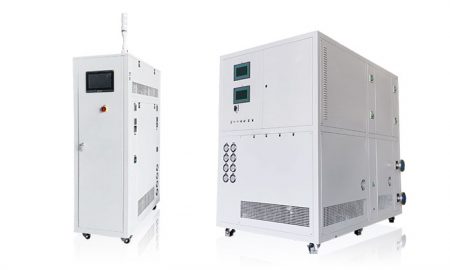
TES-Serie (Temperaturregelung für Kraftstoff- und Öltests)
- Temperaturbereich: -85℃ ~ +250℃
- Siemens PLC-Steuerung und anderes Markenzubehör
- Selbstdiagnosefunktion, mehrere Sicherheitsschutzvorrichtungen
- Vollständig geschlossenes Kreislaufsystem, kein Ölnebel bei hohen Temperaturen
- Jedes Gerät wird mehr als 12 Stunden lang einem Belastungstest unterzogen.
| Temperaturbereich | Serie -45°C ~ +250°C | Serie -85°C ~ +200°C | Serie -60°C ~ +200°C | ||||||
| Kühlleistung | 0,3 ~ 25kW | 0,25 ~ 25kW | 3 ~ 60kW | ||||||
| Hinweis: Jeder Temperaturbereich von -150℃ ~ +350℃ und jede Kühlleistung kann angepasst werden | |||||||||
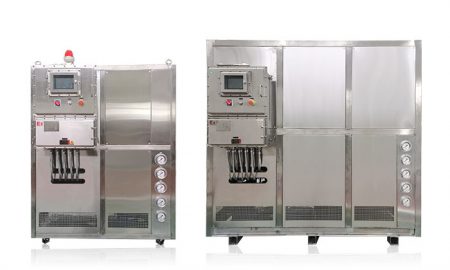
TCU Multireaktoren Temperaturkontrollsystem
- Temperaturbereich: -120℃ ~ +250℃
- Versiegelte, wiederholbare Temperaturkontrolle
- Eingebautes Thermoöl-Hilfssystem für elektrische Heizung
- Hinzufügen von Kälte- und Wärmequellen-Wärmetauschermodulen je nach Bedarf
- Jedes Gerät wird mehr als 12 Stunden lang einem Belastungstest unterzogen.
| Temperaturbereich | Serie -45°C ~ +250°C | -120°C ~ +250°C Reihe | Kundenspezifisches Temperaturkontrollsystem | RT+10°C ~ +135°C | |||||
| Heizleistung | 25 ~ 80kW | 25 ~ 80kW | Benutzerdefiniert | 25 ~ 300kW | |||||
| Hinweis: Jeder Temperaturbereich von -150℃ ~ +350℃ und jede Kühlleistung kann angepasst werden | |||||||||
 LNEYA
LNEYA
 简体中文
简体中文


















































































